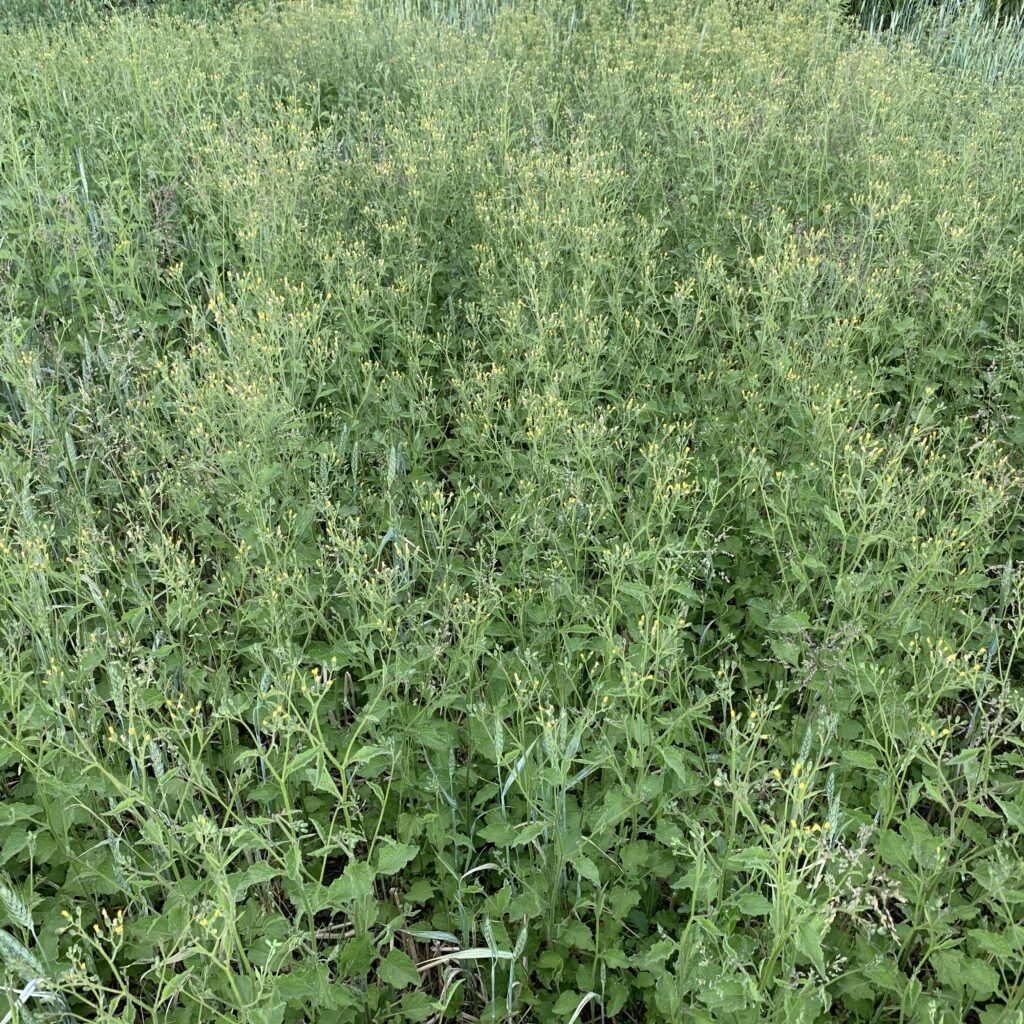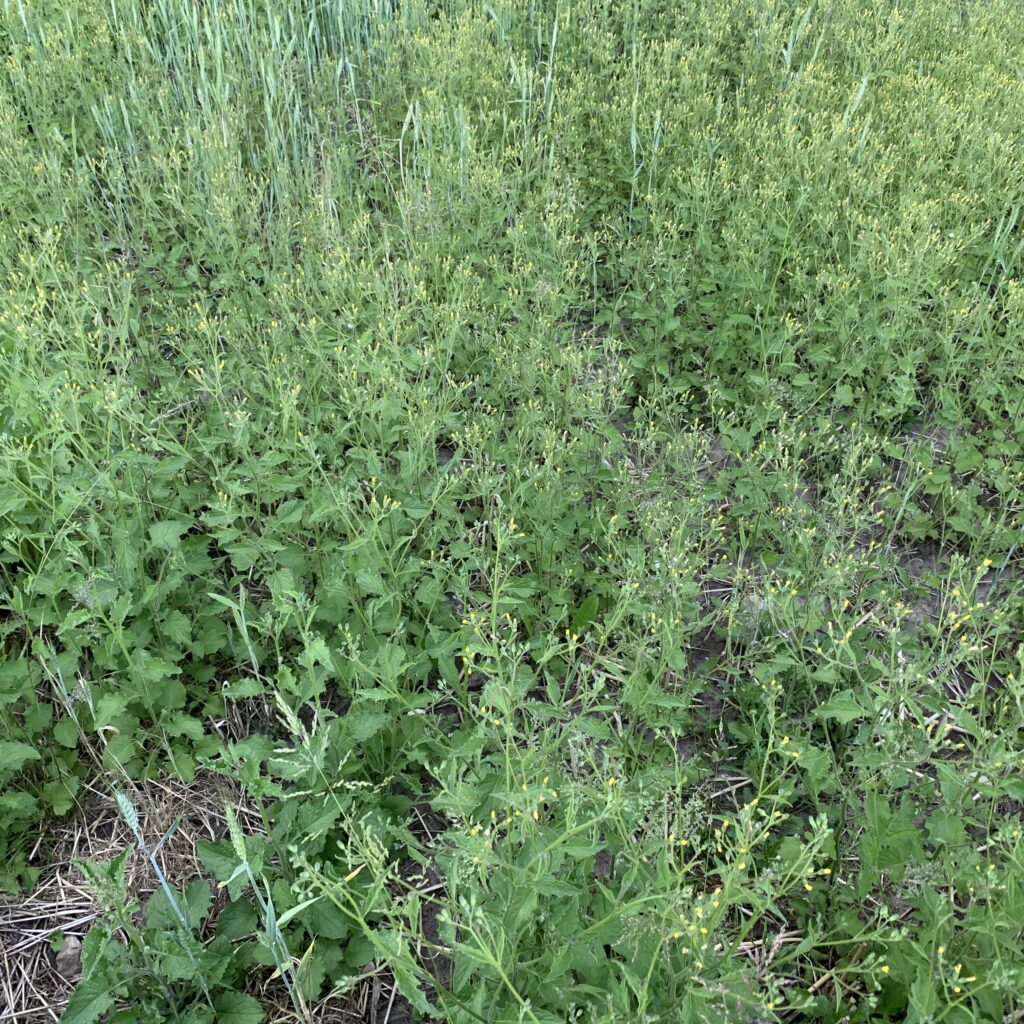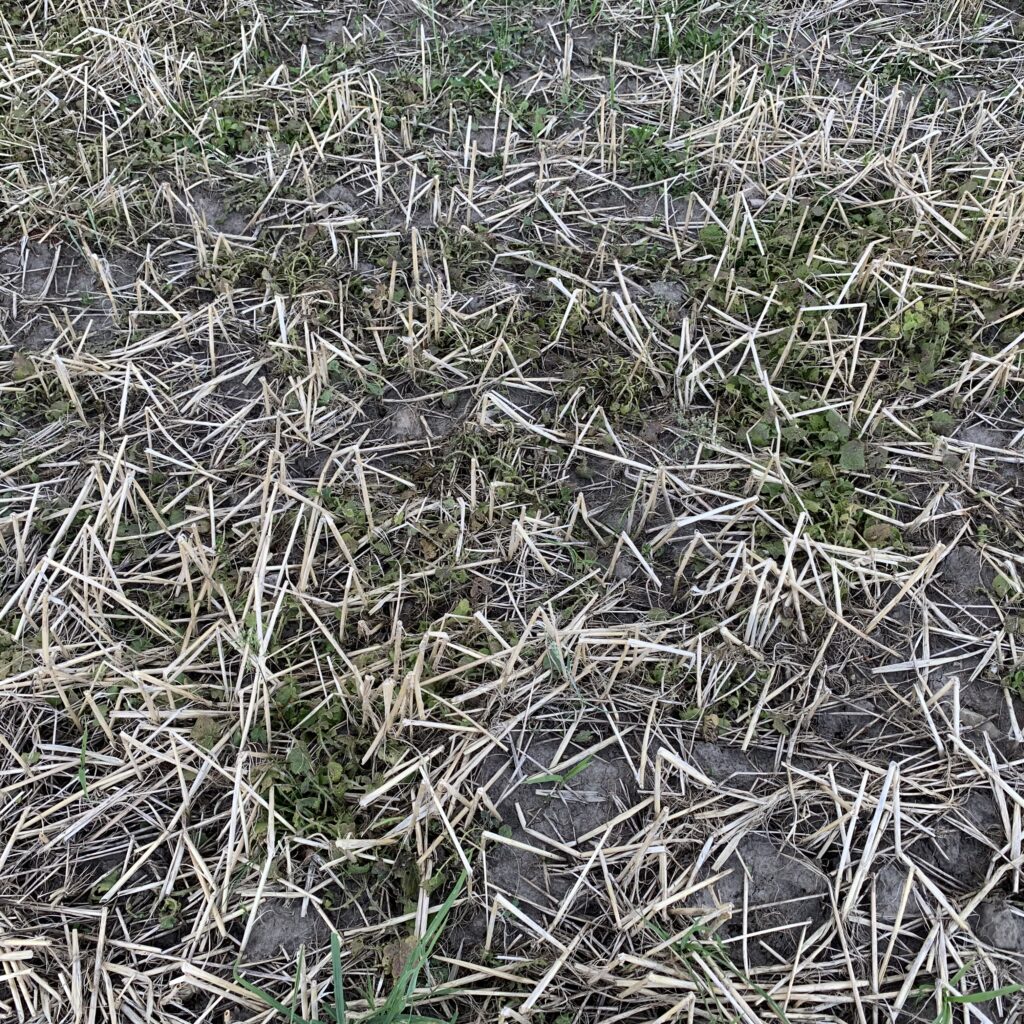Lutte contre la lapsane commune dans le blé d’automne
Question: J’ai un client qui a beaucoup de lapsane commune dans le cadre d’une rotation en semis direct. Nous avons trouvé des solutions assez intéressantes pour la plupart des cultures utilisées dans la rotation pour un bon nettoyage avant les semis, mais le producteur a encore de la lapsane dans son blé cette année. Quelle serait la meilleure solution pour améliorer la situation dans le blé aussi?
Contexte: Pour un aperçu sur la lapsane commune, je vous suggère le numéro de décembre 2014 du Country Guide, dans lequel j’ai dressé un portrait général de ce que l’on connaît actuellement sur la lutte contre cette mauvaise herbe Pest patrol: controlling nipplewort.
Réponse: Cela prend parfois pas mal de temps avant de trouver une solution efficace contre une mauvaise herbe difficile à combattre. Dans le cas de la lapsane commune dans les cultures céréalières, cela a pris tellement de temps que si la lapsane était un individu, elle serait arrivée en âge de voter!
D’abord, la lapsane commune n’est pas si courante. Il est assez difficile de trouver des champs avec des peuplements uniformes et relativement denses de cette mauvaise herbe. Il est donc difficile aussi de réaliser des essais d’herbicides avec répétition. La présence de cette mauvaise herbe n’affecte pas négativement la production, surtout dans le cas des céréales d’automne qui lèvent habituellement à l’automne et qui sont déjà assez développées au moment où les herbicides en postlevée sont appliqués au printemps. Deuxièmement, la lapsane commune est tolérante à beaucoup d’herbicides. Il faut donc faire l’essai de nombreux herbicides et faire des mélanges en cuve pour trouver des traitements prometteurs qui pourraient faire l’objet d’essais au champ.
François Tardif, Peter Smith (Université de Guelph) et moi-même avons entrepris ce processus en 2002 et nous avons certainement été en mesure de trouver les herbicides qui ne fonctionnent pas, mais heureusement nous avons aussi trouvé quelques produits qui nous laissaient un peu d’espoir. Nous avions cependant besoin de temps pour concocter certains traitements et en faire l’essai dans davantage de champs. Finalement, durant la saison 2020, nous avons fait davantage confiance à un mélange en cuve de Lontrel XC + Refine SG + un surfactant non ionique, qui s’est avéré le plus efficace contre la lapsane commune. Nous avons aussi découvert que certains des plus récents herbicides qui n’étaient pas offerts en 2002 ne sont pas particulièrement efficaces (tableau 1).
Tableau 1. Efficacité observée visuellement de la lutte contre la lapsane commune six semaines après le traitement de trois herbicides homologués pour utilisation dans le blé d’automne au cours du printemps 2020.
| Treatment |
Rates/acre |
Visual control |
| Pixxario A + Pixxaro B |
123 mL + 236 mL |
10% |
| Infinity FX |
400 mL |
50% |
| Lontrel XC + Refine SG |
100 mL + 12 g + 2 L/1,000 L |
95% |
 Figure 1. Parcelle témoin non traitée.
Figure 1. Parcelle témoin non traitée.
 Figure 2. Efficacité de la lutte contre la lapsane commune six semaines après l’application de l’herbicide Pixxaro.
Figure 2. Efficacité de la lutte contre la lapsane commune six semaines après l’application de l’herbicide Pixxaro.
 Figure 3. Efficacité de la lutte contre la lapsane commune six semaines après l’application de l’herbicide Infinity FX.
Figure 3. Efficacité de la lutte contre la lapsane commune six semaines après l’application de l’herbicide Infinity FX.
 Figure 4. Efficacité de la lutte contre la lapsane commune six semaines après l’application du mélange en cuve de Lontrel XC + Refine SG + un surfactant non ionique.
Figure 4. Efficacité de la lutte contre la lapsane commune six semaines après l’application du mélange en cuve de Lontrel XC + Refine SG + un surfactant non ionique.
~~~
Question: “Have a customer with a no-till rotation that has Nipplewort. A lot of it. We found some pretty decent options for most crops in the rotation to clean it up before planting, but he’s got some in his wheat this year too. What would be our best option to take a swing at it in wheat?”
Background: For a brief primer on nipplewort, I would refer you to the December 2014 issue of Country Guide, where I provided an overview of what we knew about managing nipplewort at the time Pest patrol:controlling nipplewort.
Answer: Sometimes it takes a long time to find a good solution for a weed that is difficult to control. In the case of nipplewort infesting cereal crops, it has taken so long that if nipplewort was a person, it could legally vote.
First off, Nipplewort is not an overly common weed species. Finding fields with uniform and relatively dense stands of this weed has proven challenging, and therefore difficult to do replicated herbicide trials. For the farmers that have it though, it does negatively affect crop production, especially in winter cereals where it typically germinates in the fall and becomes quite large by the time postemergence herbicides are applied in the spring. Secondly, nipplewort is tolerant to a lot of herbicides. Therefore, you need to screen a lot of herbicides and tank-mixes in order to find promising treatments that you would want to test under field conditions.
Dr. François Tardif, Peter Smith (University of Guelph) and I started this process in 2002 and we certainly were able to identify herbicides that didn’t work, but thankfully we found a handful of products that gave us reason for optimism, we just needed to tweak some treatments and look at them under more field sites. Finally during the 2020 field season, we have more confidence that one tank-mix in particular, Lontrel XC + Refine SG + non-ionic surfactant, gives us the best opportunity to control nipplewort. We also discovered that some of the newer herbicides that weren’t available back in 2002, aren’t particularly effective (Table 1).
Table 1. Visual control of nipplewort at 6 weeks after the application of three herbicides labelled for use in winter wheat during the spring of 2020.
| Treatment |
Rates/acre |
Visual control |
| Pixxario A + Pixxaro B |
123 mL + 236 mL |
10% |
| Infinity FX |
400 mL |
50% |
| Lontrel XC + Refine SG |
100 mL + 12 g + 2 L/1,000 L |
95% |
 Figure 1. The untreated control plot.
Figure 1. The untreated control plot.
 Figure 2. Nipplewort control at six weeks after an application of Pixxaro herbicide.
Figure 2. Nipplewort control at six weeks after an application of Pixxaro herbicide.
 Figure 3. Nipplewort control at six weeks after an application of Infinity FX herbicide.
Figure 3. Nipplewort control at six weeks after an application of Infinity FX herbicide.
 Figure 4. Nipplewort control at six weeks after the tank-mix application of Lontrel XC + Refine SG + non-ionic surfactant.
Figure 4. Nipplewort control at six weeks after the tank-mix application of Lontrel XC + Refine SG + non-ionic surfactant.
 Figure 1. The untreated control plot.
Figure 1. The untreated control plot. Figure 2. Nipplewort control at six weeks after an application of Pixxaro herbicide.
Figure 2. Nipplewort control at six weeks after an application of Pixxaro herbicide. Figure 3. Nipplewort control at six weeks after an application of Infinity FX herbicide.
Figure 3. Nipplewort control at six weeks after an application of Infinity FX herbicide. Figure 4. Nipplewort control at six weeks after the tank-mix application of Lontrel XC + Refine SG + non-ionic surfactant.
Figure 4. Nipplewort control at six weeks after the tank-mix application of Lontrel XC + Refine SG + non-ionic surfactant.